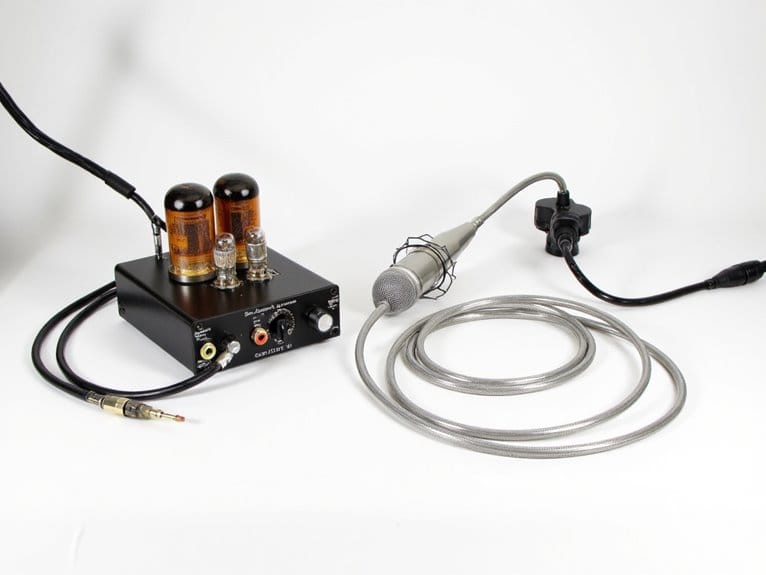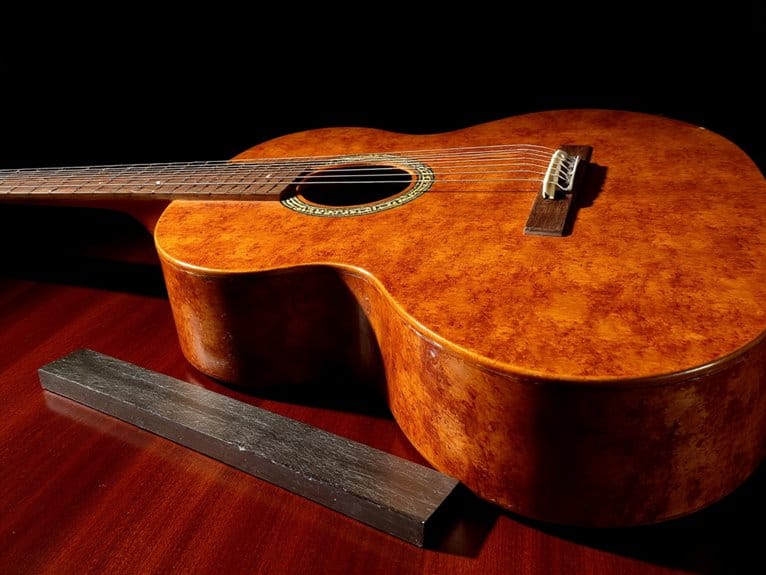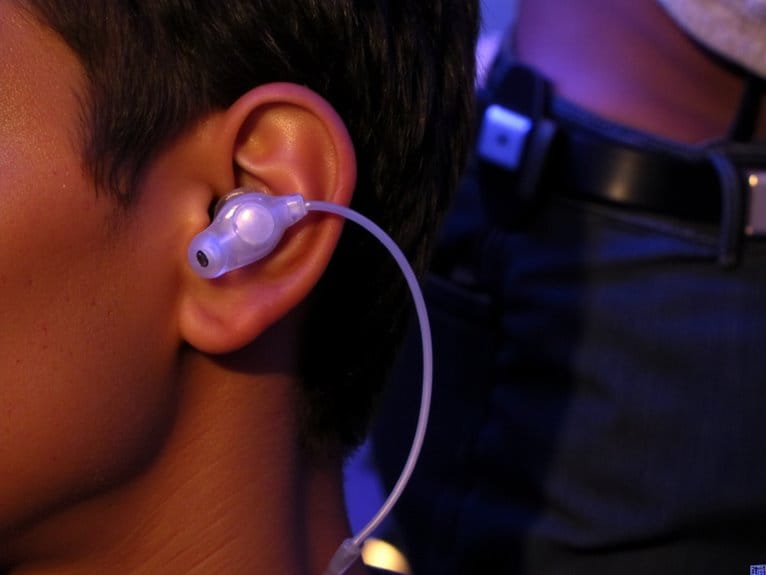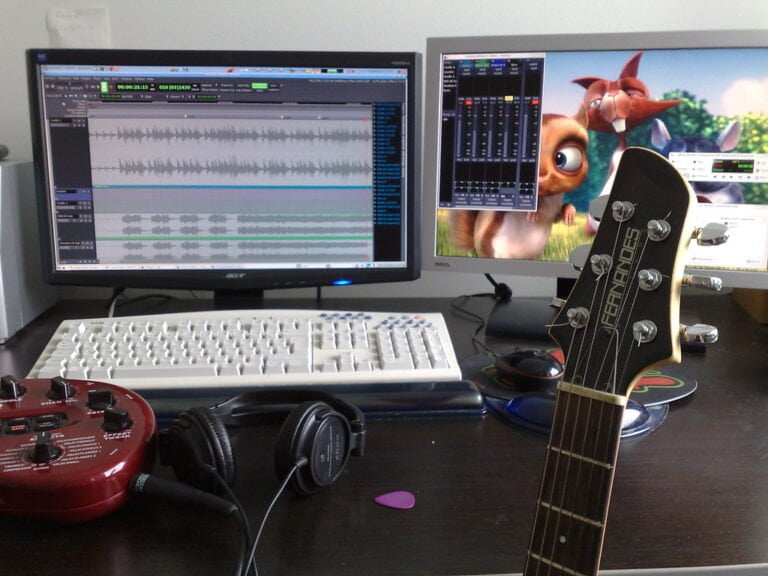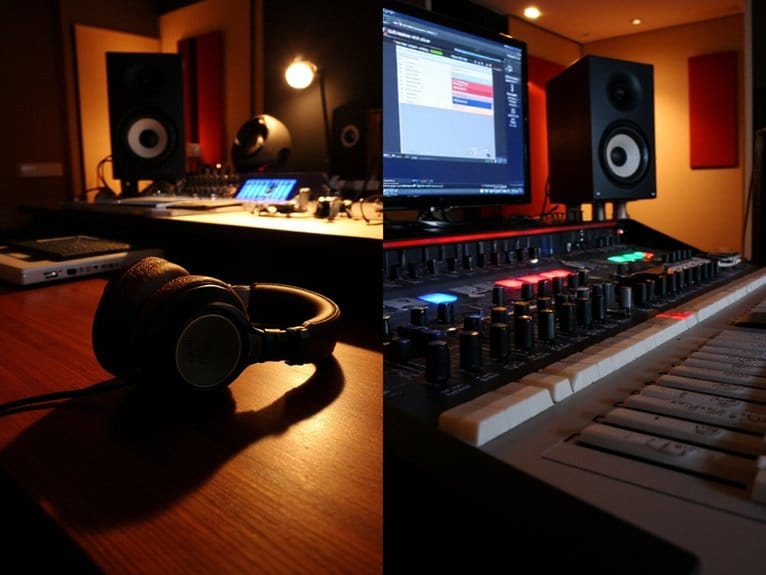Mics & Preamps: Impedance Bridging Vs Impedance Matching
When connecting mics to preamps, you’ll want impedance bridging rather than matching, despite what intuition suggests. Your preamp’s input impedance should be about ten times higher than your microphone’s output impedance-this preserves signal clarity and prevents the 6dB level loss that occurs with exact matching. I’ve found that bridging maintains better frequency response and signal-to-noise ratios, while matching creates unwanted high-frequency roll-off and increases noise floors, particularly affecting dynamic microphones’ performance characteristics.
We are supported by our audience. When you purchase through links on our site, we may earn an affiliate commission, at no extra cost for you. Learn more.
Notable Insights
- Impedance bridging requires preamp input impedance 7-10 times higher than microphone output impedance for optimal performance.
- Impedance matching creates 6dB signal loss and reduces signal-to-noise ratio, making it unsuitable for microphones.
- Bridging preserves signal clarity and prevents high-frequency roll-off that occurs with impedance matching configurations.
- Dynamic microphones are especially sensitive to impedance mismatches, requiring proper bridging for best results.
- Audio engineers prefer bridging over matching for better voltage transfer efficiency and consistent frequency response.
Understanding Impedance Relationships Between Microphones and Preamp Inputs
The relationship between microphone output impedance and preamp input impedance forms one of audio engineering‘s most misunderstood yet essential technical foundations.
I’ve watched countless engineers struggle with impedance decisions that dramatically affect their recordings’ quality. Understanding impedance theory requires grasping that every microphone possesses output impedance while preamps feature input impedance, both describing resistance to signal current flow.
Poor impedance decisions can transform pristine recordings into muddy disappointments, yet most engineers overlook this fundamental relationship between microphones and preamps.
Your mic’s characteristics determine its typical output impedance-usually low to guarantee sufficient current flow-while preamps maintain relatively high input impedance to develop voltage across their inputs.
Rather than matching these values exactly, which creates a problematic 6dB loss in level and signal-to-noise ratio, you’ll achieve peak performance when your preamp’s input impedance exceeds your microphone’s output impedance by approximately ten times. Dynamic microphones prove particularly sensitive to these impedance variations, as the relationship directly affects frequency response and the damping characteristics of their voice coil systems.
Higher impedance settings typically produce higher output levels while maintaining superior dynamic range performance. The resulting signal strength improvement becomes particularly noticeable when comparing low versus high impedance configurations during critical recording sessions. Professional microphones should maintain a signal-to-noise ratio between 70-120 dB to ensure optimal audio quality throughout the impedance bridging process.
The cardioid dynamic capsule design commonly found in professional microphones provides effective background noise rejection that remains consistent across different impedance configurations.
Why Audio Engineers Choose Bridging Over Matching for Mic-to-Preamp Connections
Given this impedance foundation, you’ll find that professional audio engineers overwhelmingly favor bridging over matching when connecting microphones to preamps.
I’ve learned through decades of studio work that this preference stems from bridging’s superior voltage transfer efficiency. The bridging advantages become obvious when you consider that maximizing voltage transfer, rather than power transfer, preserves signal clarity and fidelity throughout your recording chain.
I’ve witnessed countless sessions where matching limitations created unnecessary complications, particularly with high-frequency roll-off on longer cable runs and increased noise floors that compromise delicate microphone signals.
Modern preamps feature high input impedances specifically designed for bridging configurations, which maintain consistent frequency response, reduce signal reflections, and provide the flexibility to split signals across multiple inputs without degradation. Professional bridging implementations typically maintain input impedances that are 7 to 10 times higher than the microphone’s output impedance, ensuring optimal signal transfer without loading effects. Early audio equipment operated with a standard 600Ω impedance for both input and output, establishing the foundation for impedance matching principles that would later evolve into modern bridging techniques.
Optimizing Signal Quality and Avoiding Common Impedance Mistakes in Recording Setups
While many engineers focus on choosing the right microphone and preamp combination, I’ve discovered that understanding and optimizing the impedance relationship between these components often makes the difference between a good recording and an exceptional one.
You’ll want to maintain impedance levels where your preamp’s input impedance sits at least ten times higher than your microphone’s output impedance, ensuring proper signal integrity throughout your recording chain.
I’ve learned that confirming these specs from manufacturer documentation prevents those frustrating moments when you’re chasing noise or wondering why your vocals sound dull. High impedance sources like electric guitars require short cables to maintain signal quality and prevent degradation that can compromise your recordings.
Mismatched impedance can lead to sound quality degradation, including distortion and uneven frequency response that becomes painfully obvious during mixing. Testing different preamp inputs, particularly Hi-Z versus Lo-Z options, helps you find the sweet spot for tonal character while avoiding the gain staging nightmares that come from impedance mismatches.
On a final note
You’ll want to stick with impedance bridging for your mic-to-preamp connections, as it delivers superior signal transfer, maintains frequency response integrity, and provides the headroom you need for professional recordings. While impedance matching has its place in RF applications, it’ll actually hurt your audio quality by cutting signal levels in half. Trust the physics here-bridging isn’t just industry standard, it’s the technically correct approach for capturing clean, detailed recordings.

